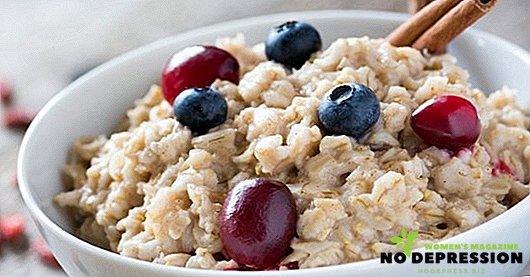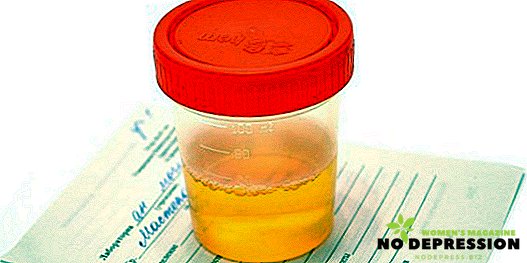Sabelnik is a well-known plant that is used to treat a number of diseases, including serious ones. With it, prepare ointments, tinctures, decoctions, etc. The main thing is that before applying it is recommended to consult with the attending specialist.

The chemical composition of this plant and its benefits
The composition of the sabelnik marsh contains such substances as:
- vitamin C;
- trace elements;
- carotenes, saponins;
- essential oils;
- organic acids.
It is a unique chemical composition that makes the marsh cinquefoil beneficial to the body during its use. The plant shows a number of pronounced actions:
- have anti-inflammatory effect;
- tonic effect;
- is an excellent immunomodulator, strengthening the body's defenses;
- has antipyretic effect, so that the plant helps to better fight fever;
- has a pronounced astringent effect.
For home treatment, you can use absolutely all parts of the plant. In this it manifests its pronounced universality. Each part contains in certain quantities various components that make it possible to successfully fight against many diseases.
The plant has powerful antioxidant properties, preventing the formation of free radicals, which lead to the activation of the aging process of the body at the cellular level. Free radical chains are the main culprit in pathological conditions that occur in the body.
Indications for use
The most useful part is the root of the plant. Sabelnik is usually used for:
- joint diseases in the form of arthritis and arthrosis.
- with radiculitis;
- catarrhal diseases, including flu;
- in the presence of stones in the gallbladder;
- in renal disease;
- with osteochondrosis;
- hypotension;
- inflammatory processes in the gallbladder;
- with jaundice;
- with purulent wounds, etc.
Drugs from crab sabelnik
From the sabelnik can be prepared means of various dosage forms for oral administration, for external use. Although in each case, the number and composition of plant materials for the preparation of medicines from the sabelnik is selected individually, but there are traditional folk recipes.
Infusions
They are made from herbs and leaves. To prepare, take 2 tbsp. dried leaves, pour 400 ml boiling water, putting in a glass container. Insist on for 2 hours. Ready infusion filter and store in a cool dark place.
You can also make an infusion of the roots. To prepare the infusion take 2 tbsp. l dried crushed roots of cinquefoil, put in an enamel bowl, pour 2 cups of boiling water, cover with a lid and soak for 15 minutes in a water bath. Then for 30 minutes to insist, strain and, topping up boiling water, bring the volume of infusion to two glasses. For the preparation of infusions can also use a thermos.

Decoction
To prepare the broth, you need 2 tbsp. crushed leaves, rhizomes, put in an enamel container, pour 1 liter of boiling water and bring to a boil. Then boil for about 10 minutes. Then cover the broth and insist for two hours. Strain the broth and take it according to the method of treatment.
Alcohol tincture
To prepare it, take 200 g of dry rhizomes, pour into a glass container, pour 1 l of vodka, leave for about two weeks in a dark place. Strain the tincture and store it in a cool dark place.
Poultice
Before you make a poultice, you should take 3 tbsp. l chopped dried or fresh leaves of cinquefoil, put in a glass or enamel bowl, pour 2 cups of boiling water and leave for 5 minutes. Then pour everything into a colander, put steamed leaves between two layers of gauze and apply to sore spots.
Oil extracts
There are two options:
- Hot. To prepare it, take 1 tbsp. dry leaves, put in a glass container, pour in 200 ml of menthol and camphor oil, mix everything thoroughly and send to a water bath. Heat the mixture for one hour, cool, strain and store in a glass dish in a cool dark place.
- Cold. To prepare it, you need to take 400 g of dry, shredded rhizomes, pour in 1 l of vegetable oil, cover with a lid and leave for 3 weeks in a dark place. Strain the prepared extract and store it in a glass dish in a cool dark place.

Ointment
To prepare the ointment in a glass jar poured to the top, without compacting, chopped plant material sabelnika. You should take dry leaves or a mixture of leaves and stems, taken in equal proportions. Pour olive or sunflower oil into the jar, tie the jar with a cloth and insist on the sun for a month. Strain the present oil, heat it to a temperature of 70 ° C and mix with melted pork lard in a 1: 1 ratio. If treatment requires a thicker ointment, then the amount of lard should be increased.
Is there a contraindication to the plant?
Despite the wide range of healing properties, the sabelnik, like any other medicinal plant, has contraindications that should be taken into account.
This tool is not recommended for use in the treatment of people with hypotension (too low pressure), because the sabelnik slows down the work of the heart muscle, blood vessels.
The symptoms that can occur in a person when using sabelnik include:
- general weakness;
- drowsiness;
- headache;
- cramping of the limbs;
- loss of consciousness.
Other contraindications include:
- pregnancy;
- lactation;
- childhood.
Patients should be aware that the use of cinnamon in the initial stages of treatment can cause an exacerbation of the disease, but this should not be frightened. Symptoms usually disappear in two to three days. If this did not happen, and the patient began to feel worse, it means that he has certain contraindications to the components of the plant.
In addition, it is recommended to always consult with the attending specialists before taking a sabelnik.
Acceptance of sabelnik in various diseases
Arthritis

For the treatment of this disease, alcoholic liquor is suitable, which is taken three times a day and 1 tbsp. At the same time, with the same tincture, make compresses and rub it into sore spots. The course of treatment is 1.5-2 months.
Do not forget about preventive measures that will help get rid of diseases of the joints. 100 g of dry roots of cinnamon need to fall asleep in a glass container, pour 500 ml of vodka and infuse for two weeks. Ready tincture strain and take 4 tsp. before meals 3 times a day.
Radiculitis
For the treatment of radiculitis or rheumatism, it is necessary to apply hot poultices from sabelnik leaves to the sore spot.
Salt deposits
To get rid of this problem, you need if you take the tincture prepared according to the following recipe. Take equally the roots and stems of sabelnik, chop and mix. Fill the glass mixture to the top, without softening, with a half-liter glass jar and pour over the vodka. Close the jar with a lid, put in a dark place and insist for 2 weeks. Ready tincture strain and take 1 tsp. 3 times a day after meals. The course of treatment is 30 days.
Sore joints and bruises
To get rid of unpleasant sensations, it is recommended to apply cold oil extracts to bruises. Joint pains subside, if during the attacks lubricate sore spots with a sabelnik-based ointment.
Arthritis
In rheumatoid arthritis, you can be treated with 10% vodka tincture sabelnik marsh. Take 1 tbsp. l 3 times a day before meals. The course of treatment is to finish when 1 l of tincture is taken. Simultaneously with the tincture it is necessary to drink the decoction of the collection, which is prepared as follows. Take 3 parts of meadowsweet flowers, Althea medicinal root, black currant leaves and common raspberry leaves, 2 marsh wild rosemary shoots, 1 part naked licorice and angelica roots.
All plants chop, mix and 1 tbsp. l mixes put in the enameled ware. Then pour 1 cup of hot water, close and stand for 15 minutes in a water bath. After that, insist for 30 minutes, strain and add boiling water, bringing the volume to 1 cup. Take ⅓ cup 3 times daily before meals.
Mastopathy
In some forms of this disease (cystic, diffuse, fibro-diffuse, and fibroadenoma), the problem with the use of sabelnik can be solved.
 Make the infusion is quite simple. Use this recipe:
Make the infusion is quite simple. Use this recipe:
- take 4 parts of the leaves of the marsh Cinquefoil, the grass of the tripartite train and the late-toothed;
- 5 parts of burdock root and grass clover;
- 2 parts of peony root, nettle leaves, dioecious, ivy-shaped buda grass, thistle thistle and large celandine, meadowsweet flowers and calendula;
- 1 part of the rhizome with roots of safflower-shaped leaves.
Grind all plants, take 2 tsp. mix, pour in a thermos, pour 2 cups of boiling water, close and infuse for 6 hours. Ready infusion filter and pour back into a thermos. Take warm cup 3 times a day 1 hour before meals. The course of treatment is 1 month. After a ten-day break, treatment can be repeated.
Pharmaceutical preparations with sabelnik
In pharmacies, you can also find drugs that are based on Sabelnik.
For example, in the form of drops. In this case, they are used as the main source of macro- and microelements in the treatment of degenerative and inflammatory conditions of the musculoskeletal system. Such drops help reduce pain, restore joint function. They are also often prescribed as a restorative.
Indications for use: arthritis, gout, arthrosis, polyarthritis, osteochondrosis, rheumatism. Methods of application and dosage: during meals, ten drops 3-4 times a day. Duration of use - a month. If necessary, the course is desirable to repeat. However, it is recommended to consult a specialist before applying.
Herbal tea. This tea has several properties:
- detoxification of the body;
- cell renewal, slowing aging;
- stimulation of the immune system;
- restore thyroid function;
- relieve vascular spasms.
It is recommended to use herbal tea as a dietary supplement to the normal diet, to strengthen cartilage and to regulate salt metabolism. Herbal tea is used in the complex treatment of diseases of the musculoskeletal system. How to use: drink herbal tea once a day, preferably in the morning, an hour after breakfast. Contraindications to the use of herbal tea: peptic ulcer disease, pregnancy, individual intolerance to sabelnik.












